|
||||||||||||||||||||||||||||||||||||||||||||||||
|
||||||||||||||||||||||||||||||||||||||||||||||||
|
|
||||||||||||||||||||||||||||||||||||||||||||||||
|
||||||||||||||||||||||||||||||||||||||||||||||||
|
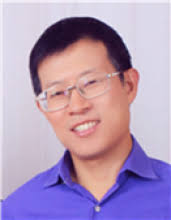
A captivating group of materials whose existence has been experimentally proven a little over a decade ago will feature on the afternoon of September 25 at the XVIII B-MRS Meeting. These are topological insulators, which in broad lines can be described as materials that are insulating in their interior but can support flows of electrons on their surface. These materials have attracted the scientific community both for the challenges they pose to basic science and for their application possibilities in quantum computing and spintronics, two areas that should generate technologies for the very high performance devices we will use in the future.
The lecturer will be Mingzhong Wu, Professor of Physics at Colorado State University (USA). Prof. Wu received his Ph.D. in Solid State Electronics from Huazhong University of Science and Technology (China) in 1999. In 2007 he joined the faculty of Colorado State University. Between 2012 and 2016 he was an Editor for IEEE Magnetics Letters. Currently he serves as an Editor for Physics Letters A, besides being on editorial boards of Journal of Applied Physics and Journal of Magnetism and Magnetic Materials. He has authored about 140 papers and 4 book chapters, and he has co-edited a book on magnetic insulators.
In his plenary lecture at the XVIII B-MRS Meeting, Professor Wu will talk about the experiments he conducted on a system consisting of a topological insulator layer interfacing with a magnetic insulator layer. Working with this system, Professor Wu could understand a little more about the nature of topological insulators, as well as explore applications related to the control of magnetic properties.
See our mini interview with this scientist.
B-MRS Newsletter: – We´d like to know more about your scientific work. Please choose your favorite contribution, briefly describe it, and share the references.
The main interests of my research group are with magnetization dynamics and spintronics. We have contributed to the development of the research field of insulator-based spintronics. We explored different approaches for using magnetic insulators to generate pure spin currents; demonstrated the use of spin currents to manipulate and control magnetization in magnetic insulator thin films; and developed unique processes for the growth and patterning of high-quality magnetic insulator thin films. Using spin waves in magnetic insulator thin films, we have observed experimentally a number of new nonlinear phenomena, such as soliton fractals and chaotic solitons. These observations contributed to the advance of “Nonlinear Dynamics” in general and the understanding of magnetization dynamics in magnetic thin films in particular. Some of our works are listed at: https://www.physics.colostate.edu/about/people/mingzhong-wu/
B-MRS Newsletter: – What does the word “topological” refer to in the case of the insulators you study?
The word “topological” refers to the topological distinction between topological insulators and ordinary insulators. Insulators can be characterized by a Z2 topological invariant. This invariant takes odd integers for topological insulators but takes even integers for ordinary insulators.
For more information on this speaker and the plenary talk he will deliver at the XVIII B-MRS Meeting, click on the speaker’s photo and the title of the lecture here https://www.sbpmat.org.br/18encontro/#lectures.
Description
While the electronic age has made the publication process easier and quicker, optimizing the structure of a scientific paper requires a certain degree of skill and proficiency. During this “ACS Publications’ Meet the Editors” event, editors from some of our journals will summarize the key steps involved in writing an effective paper, journal submission, review processes, and post-publication efforts.
Panelists

When?
September 25, 2019, from 12:00 to 14:00.
Where?
At Sibara Hotel, Persico room (3rd floor).
Registration
Free registration is limited to 180 participants. Go the general registration meeting system and choose this session in “add/edit activities”: https://www.eventweb.com.br/xviiisbpmat/home-event/
Lunch boxes will be provided.
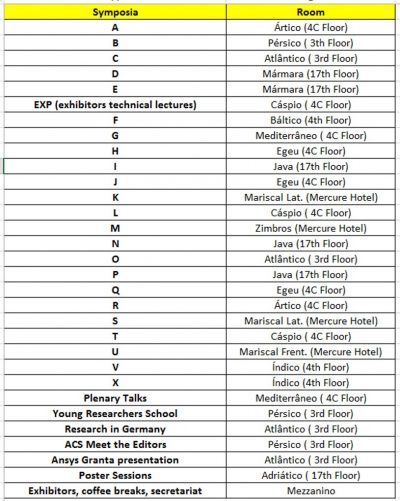 Due to the high participation in the XVIII B-MRS meeting (Balneário Camboriú, September 22 to 26), and to ensure everyone’s comfort, the sessions and activities will take place in two hotels, 300 meters apart: Hotal Sibara Flat & Conventions and Mercure Camboriu Hotel. Both venues are located in the center of the city, close to many hotels, restaurants and shops, and some meters from the sea.
Due to the high participation in the XVIII B-MRS meeting (Balneário Camboriú, September 22 to 26), and to ensure everyone’s comfort, the sessions and activities will take place in two hotels, 300 meters apart: Hotal Sibara Flat & Conventions and Mercure Camboriu Hotel. Both venues are located in the center of the city, close to many hotels, restaurants and shops, and some meters from the sea.
In addition, the opening session of the event will be held at the Cristo Luz Complex, one of the main tourist attractions in the city, with impressive panoramic views.
Finally, the event party will be held at the Lounge of the Green Valley Club, elected ‘The Most Prestigious International Club’ in 2013, 2015, 2018 and now 2019. The band of the party will be the “Brothers”, see videos: https://www.youtube.com/watch?
Opening session (opening ceremony, memorial lecture and welcome cocktail):
Where? Cristo Luz Complex. Rua Indonésia, 800, Balneário Camboriú.
When? September 22 (Sunday), starting at 7:30 pm.
How to get? The complex is a 10-minute taxi/Uber ride from the Sibara Hotel. There will be free shuttle service between Sibara Hotel and “Complexo Cristo Luz” from 5:00 pm on. It is recommended to arrive in advance.
Oral sessions of symposia K, M, S and U: at the Mercure Camboriú Hotel. Avenida Atlântica, 2010, Balneário Camboriú.
All other program sessions and activities (oral sessions of all other symposia, all poster sessions, plenary lectures, technical lectures of exhibitors, pre-event tutorial, exhibitors fair, coffee breaks, secretariat, workshops and round tables): at Hotel Sibara. Avenida Brasil, 1500, Balneário Camboriú.
Conference Party
Where? Lounge of the Green Valley Club.
When? September 25 (Wednesday), starting at 9 pm.
How much? 20 reais. Tickets (limited) will be on sale at the event secretariat from September 23 (Monday).
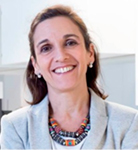
After blood, bone is the most frequently implanted/ transplanted tissue, with about 2 million bone grafts performed each year worldwide – a number that tends to increase at the rate of population aging. A well-known case is that of the jaw graft to allow firmer dental implants. However, many other causes, such as tumors, severe fractures, congenital malformations or even infections, may cause a patient to need a graft, that is to say, an implant of a natural or synthetic piece of bone to support the natural growth of bone tissue.
In Barcelona, at the Universitat Politècnica de Catalunya (UPC), a research group has been successfully working on the development of innovative tissue regeneration biomaterials. Led by Professor Maria-Pau Ginebra, the multidisciplinary group consists of 30 researchers. After many published papers and patents obtained, Professor Ginebra decided to found, along with other members of the group, a spin-off company to bring the results of years of research into real life. Thus, in 2013, Mimetis Biomaterials was created, dedicated to nature-inspired bone regeneration solutions.
On the afternoon of September 24, Prof. Maria-Pau Ginebra will deliver a plenary lecture at the XVIII B-MRS Meeting. She will talk about a new generation of bone graft biomaterials, made through nature-inspired methods that allow control of the structure and composition of the material at the nano scale. The resulting biomaterials bring together the benefits of both natural and artificial bones, including the possibility of producing personalized grafts on 3D printers.
See our mini-interview with this Spanish scientist, Full Professor and Head of the Department of Materials Science and Metallurgy at UPC, President of Mimetis Biomaterials, and Member of the Editorial Board of Acta Biomaterialia, Journal of Tissue Engineering and the International Journal of Molecular Sciences.
B-MRS Newsletter: – You work in a research area that has a direct impact on society. What, in your opinion, is your scientific discovery with the greatest actual or potential impact? Please describe it very briefly.
One of the great challenges in the field of bone regeneration is the development of synthetic materials that are able to be degraded and transformed in newly formed bone. In this case, the synchronization between material degradation and new bone deposition is critical, and very difficult to achieve. We have demonstrated that this can be accomplished by using biomimetic processing routes, which allow tuning the nanostructure and composition of hydroxyapatite, mimicking more closely the mineral phase of bone. In this way the synthetic material can enter the natural bone remodeling cycle, allowing for this progressive transformation in new bone tissue.
B-MRS Newsletter: – Turning scientific knowledge into products is not an easy task. In your experience, what are the most important factors in getting a lab research to become a product on the market?
The transformation of the scientific achievements into real products is indeed a great challenge. This is particularly difficult in the biomedical field, where the scientists face a number of regulatory restrictions which were often overlooked during the previous stages of more “academic” research. In my experience, to be successful, you need the confluence of a good idea and the right people. Moreover, you need money. In summary, in my experience there are three main aspects that determine the success of the translation of a good idea to the market: 1) selecting a good team, with people mastering the different aspects of entrepreneurship, which we, as scientist, do not know; from regulation/legislation to marketing and financial aspects; 2) finding appropriate investors is always necessary; the innovation in the biomedical field is particularly expensive; 3) being willing to work really hard.
For more information on this speaker and the plenary talk she will deliver at the XVIII B-MRS Meeting, click on the speaker’s photo and the title of the lecture here https://www.sbpmat.org.br/18encontro/#lectures.

Many shades of blue, red and purple that we can see in the vegetable kingdom (for example, in grapes, raspberries, eggplants and flowers such as violets) are known to be generated by the presence of natural pigments called anthocyanins. However, what makes anthocyanin express in a plant a certain tone of this wide range? This intriguing basic science issue has applications of great interest to the food industry in its quest for healthier dyes from natural components.
A thorough answer will be presented in a plenary lecture of the XVIII B-MRS Meeting by Stefano Baroni, Full Professor of Condensed Matter Theoretical Physics at Scuola Internazionale Superiore di Studi Avanzati (SISSA) – an institution located in Trieste (Italy), dedicated to research and graduate studies in various areas of science. Baroni has been studying that issue, using, mainly, a computational method that considers phenomena occurring at the molecular level over several time scales.
Prof. Stefano Baroni is an internationally renowned Italian scientist who loves to invent and improve computational methods to unveil the properties of matter at the molecular scale and apply them to problems of fundamental and applicative interest. For example, Baroni is one of the principal creators of Density Functional Perturbation Theory (DFPT), a computational tool that allows the study of physical properties of materials that depend on responses to external perturbations. He is also the founder and one the main instigators of the Quantum ESPRESSO, project, one of the most popular open source softwares for quantum materials modeling and calculations at the nanoscale, and founding director of the Quantum ESPRESSO Foundation.
Stefano Baroni obtained a degree in Physics from the Università di Pisa (Italy) in 1978. After that, until 1984, he was a postdoctoral fellow at the École Polytechnique Fédérale de Lausanne (EPFL), in Switzerland. Later, he became Assistant Professor at the Department of Theoretical Physics at the Università degli Studi di Trieste until he joined SISSA in 1988. From 1994 to 1998, he was Director of CECAM, a European center for research in computational sciences and their applications, then based at the École Normale Supérieure de Lyon, in France. Thereafter, until 2003, he served as coordinator in Trieste of the Istitituto Nazione per la Fisica della Materia (INFM). From 2001 to 2008, he was Founding Director of the DEMOCRITOS national simulation center, now part of the Italian CNR. Baroni has been a visiting professor at many institutions around the world, including Université Pierre et Marie Curie (France), Princeton University (USA), University of Minnesota (USA), University of Sydney (Australia), University College London (UK).
See our mini interview with Prof. Stefano Baroni.
B-MRS Newsletter: – We´d like to know more about your scientific work. Please choose one or two of your favorite/ high-impact contributions, briefly describe them, and share the references.
For forty years my research has been motivated by the attempt to solve the fundamental equations that determine the properties of materials at the atomic scale, in the most realistic conditions practically accessible to computational science. While this effort, which I shared with many scientists more talented than me around the world, is having a tremendous impact in many and diverse technologies, as this Conference convincingly witnesses, my own motivation has been, how to say?, a bit “swotty”? Theorists like me strive to understand. Geniuses sometimes understand what they cannot teach or do not care to implement. Ordinary swots have to do, implement, and teach in order to convince themselves they have understood, and this is what I have been doing all my life, like a Renaissance craftsman. I am probably mostly known for density functional perturbation theory [https://doi.org/10.1103/RevModPhys.73.515], a technique that Paolo Giannozzi and I introduced in the late 80s [https://doi.org/10.1103/PhysRevLett.58.1861] and that is now considered the state of the art in the simulation of the vibrational properties of condensed matter. In the late 00s my colleagues and I generalised this technique to account for the dynamical phenomena that are probed in optical spectroscopies [https://doi.org/10.1103/PhysRevLett.96.113001, https://doi.org/10.1063/1.2899649]. This work provided the methodological motivation for me to enter the field of molecular spectroscopy, which eventually led me to study the color of flowers and fruits. The challenge to compute what others believe cannot be computed was also the motivation for me to enter the fascinating field of heat and charge transport in condensed matter, a senile passion I will have the privilege to report on in Symposium S of this conference on September 24 at 9:30 [https://doi.org/10.1038/nphys3509, https://doi.org/10.1038/s41598-017-15843-2, https://doi.org/10.1038/s41467-019-11572-4, https://doi.org/10.1103/PhysRevLett.122.255901, https://doi.org/10.1038/s41567-019-0562-0].
B-MRS Newsletter: – The subject of the talk aroused our curiosity. Could you tell us what led you to study these pigments? Does it have to do with industrial interest? With the search for fundamental answers? With the application of a new methodology?
As mentioned before, I was drawn to molecular spectroscopy while seeking useful applications for a new computational method that my collaborators and I had devised to deal with dynamical perturbations to quantum-mechanical systems. Ask around what would be the most important application of molecules absorbing light, and many would answer: “solar cells to produce clean, inexhaustible, energy”. So we went, and we were induced into the wrong thinking that efficient and inexpensive solar cells could be manufactured “using fruit juice” (i.e. using anthocyanins as the light-absorbing element of a photovoltaic device). It soon became clear that while the principle per se is not wrong (in fact, organic solar cells based on it are routinely assembled and used for educational purposes https://www.teachengineering.org/activities/view/uoh_organic_activity1, https://education.mrsec.wisc.edu/titanium-dioxide-raspberry-solar-cell/) the stability and efficiency of the resulting device are far too poor for industrial purposes. Meanwhile, our work attracted some attention, and I was invited to some important meetings on solar energy. On one occasion, I declined the invitation knowing that our work could not have a real impact in the field. The organisers flatteringly insisted, and I finally accepted under the condition that I would not talk of solar energy, but of the color of fruits and flowers, which had meanwhile started to arouse my curiosity. A few months later I was approached by a representative of a head-hunting company who, seeking an expert in the molecular simulation of natural dyes on behalf of a major multinational food manufacturer, had stumbled across the abstract of my talk. When I received the telephone call I thought it was a prank and I almost hung up on her. I resisted the impulse, and that was the beginning of an exciting five-years adventure in industrial research, which I never thought I would have lived and whose story I will tell in Balneário Camboriú …
For more information on this speaker and the plenary talk he will deliver at the XVIII B-MRS Meeting, click on the speaker’s photo and the title of the lecture here https://www.sbpmat.org.br/18encontro/#lectures.
|
|||||||||||||||||||||||
|
|||||||||||||||||||||||
|
 A mix of entrepreneurial spirit, born in childhood, and scientific training, developed in the university stage, led Brazilian Amanda Luizetto dos Santos to create Nanomed two years after completing her doctorate. “The foundation of Nanomed was a natural thing, I always wanted to undertake it, I just needed some time to mature the concept as I imagined,” Amanda states.
A mix of entrepreneurial spirit, born in childhood, and scientific training, developed in the university stage, led Brazilian Amanda Luizetto dos Santos to create Nanomed two years after completing her doctorate. “The foundation of Nanomed was a natural thing, I always wanted to undertake it, I just needed some time to mature the concept as I imagined,” Amanda states.
Early on in her childhood, Amanda used to set up a street stall to sell her drawings. “From an early age entrepreneurship aroused my heart,” she says. Time passed and pastimes became a life goal. At the end of her undergraduate years in Pharmacy, she participated in an initiative to train young entrepreneurs, in which she opened, maintained and closed (with a positive balance, she explains) a decorative candles company. “This experience was very enriching and, in fact, revived my interest in the world of entrepreneurship,” she recalls.
From her undergraduate degree, Amanda went straight to a doctorate in Analytical Chemistry, at the São Carlos Institute of Chemistry (USP), where she dealt with research in essential oils. The doctorate program included a scientific internship in the United States at Cleveland State University. Then, working closely with the cosmetics industry, Amanda noted this market’s demand for innovation and managed to design a first version of the company. “I found what I had been looking for since I was a young girl,” she says.
Located in São Carlos, in the state of São Paulo (Brazil), Nanomed is dedicated to developing and marketing innovative nanosystems, designed to solve specific challenges of the industry segments such as cosmetics, health and wellness. An example of Nanomed’s technology is nanocapsules that protect substances of interest (skin moisturizing molecules, medicine flavorings, insect repellents), transport them in minimal doses and deliver them to the desired location. Nanomed’s nanocapsules and other nanoparticles, Amanda emphasizes, undergo scientific evaluations to check for toxicity to living tissues and the environment.
In addition to developing nanosystems for other companies, the startup is building its product portfolio. The first products, two nanotechnology-based cosmetic lines, will enter the market (via e-commerce) soon. And between the end of this year and the beginning of next, new products of the food and sanitizing segments will be launched.
Nanomed was formally created in 2012 following the approval of a project in the PIPE program of the São Paulo Research Foundation (Fapesp). PIPE supports scientific and technological research in small companies in the state of São Paulo. Shortly after its creation, Nanomed was incubated in the São Carlos Technology Park (ParqTec), where it remained until 2017.
Since its inception, the startup has been dedicated to R&D of its technologies and products and, at the same time, has taken advantage of its ability to perform analysis and testing to provide services, especially to companies in the cosmetics and pharmaceutical segment. Thanks to the provision of services, Nanomed today is self-sustaining, states Amanda, who is the company’s CEO. “However, profit is still being reinvested,” she says.
For its R&D and service activities, Nanomed has equipment at the company’s headquarters, some of them acquired in projects supported by Fapesp and the Brazilian federal agencies Finep and CNPq. In addition, the startup hires specific assays at university labs and other partners.
Fifteen people currently work at Nanomed – partners, employees, fellows and consultants. Most of the team consists of masters and doctors with degrees in Pharmacy, Chemistry, Engineering and Physics, who work in product development and service provision. The startup also has professionals working in the legal and administrative areas.
Below is our interview with Amanda Luizetto dos Santos, founding partner and CEO of Nanomed.
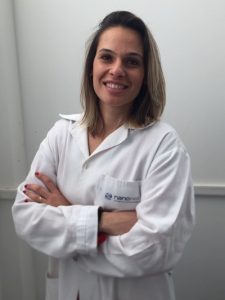
B-MRS Newsletter: What were the most important factors that enabled the creation and development of the startup?
Amanda Luizetto dos Santos: The key factors that enabled Nanomed include the support of Fapesp and ParqTec. Since the beginning of Nanomed, Fapesp has been a fundamental pillar in technology and product developments by financing innovative and high risk projects. ParqTec, which is the oldest incubator in Latin America and is located in São Carlos, was very important because it allowed immersing in the environment of innovative entrepreneurship, as well as supporting the business construction.
B-MRS Newsletter: What were the most important moments for you in the history of the startup?
Amanda Luizetto dos Santos: The most important moment was participating in a meeting at Anvisa’s parliamentary meeting to defend a grade 2 cosmetic product developed by Nanomed and which will be launched and marketed later this year.
[Editor´s Note: Grade 2 products are toiletries or cosmetics whose characteristics require proof of safety and/or efficacy, as well as information on use mode and restrictions].
B-MRS Newsletter: What were the main difficulties the startup has faced thus far?
Amanda Luizetto dos Santos: The main difficulty, still encountered, is the slowness and regulatory bureaucracy that is related to the fact we work in the health area.
B-MRS Newsletter: What do you think is the main contribution of the startup to society?
Amanda Luizetto dos Santos: The main contribution is to offer safe and innovative products to society and contribute to the population’s quality of life.
B-MRS Newsletter: What is your goal/dream for the startup?
Amanda Luizetto dos Santos: Nanomed’s goal is to make people happy and satisfied by offering a line of innovative and high performance products in the domestic and international market.
B-MRS Newsletter: Leave a message to our newsletter readers and social media followers who are considering starting a startup.
Amanda Luizetto dos Santos: I believe we need to be realistic when we think about the future, especially when it comes to opening a business of our own. The idea that to undertake is to have no boss does not exist, in fact, you have thousands of bosses, such as client, employee, government, and many others. So, entrepreneurship means working hard and in all sectors of the business (all of them!). Creating a startup and keeping it alive requires a great deal of work (quite a lot), dedication, resilience and a cool head.
The universe of entrepreneurship is a constant adrenaline rush, particularly addictive, while it brings immense satisfaction to see things come to fruition, that cold feeling in the belly is inevitable. I can’t live without it (I still don’t know if fortunately or unfortunately!).
[Paper: Characterization of the structural, optical, photocatalytic and in vitro and in vivo anti-inflammatory properties of Mn2+ doped Zn2GeO4 nanorods. Suzuki, V. Y.; Amorin, L. H. C; Lima, N. M; Machado, E. G; Carvalho, P. E.; Castro, S. B. R.; Souza Alves, C. C.; Carli, A. P.; Li, Maximo Siu; Longo, Elson; Felipe La Porta. J. Mater. Chem. C, 2019, 7, 8216. DOI: 10.1039/c9tc01189g]
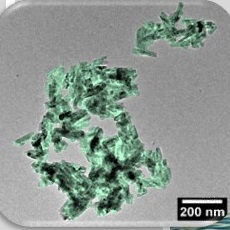 A team of researchers from Brazilian universities found, in cylindrical nanostructures known as nanorods, an anti-inflammatory effect equivalent to that achieved by commercial drugs. Researchers have also demonstrated the effectiveness of these nanorods as catalysts (accelerators) in the degradation of a pollutant. These applications are even more relevant considering that the scientific team was able to produce large quantities of the material through a simple and fast process. The work carried out shows the potential of these nanorods for the development of new medicines and for the treatment of effluents.
A team of researchers from Brazilian universities found, in cylindrical nanostructures known as nanorods, an anti-inflammatory effect equivalent to that achieved by commercial drugs. Researchers have also demonstrated the effectiveness of these nanorods as catalysts (accelerators) in the degradation of a pollutant. These applications are even more relevant considering that the scientific team was able to produce large quantities of the material through a simple and fast process. The work carried out shows the potential of these nanorods for the development of new medicines and for the treatment of effluents.
The work originated about three years ago when Professor Felipe de Almeida La Porta, who had recently joined the faculty of the Federal Technological University of Paraná (UTFPR), Londrina campus, was implementing a research group on nanotechnology and computational chemistry at this university. “Our laboratory was investigating some classes of emerging materials, with the perspective of aligning theory and practice, thus driving new discoveries and applications,” says La Porta. One of the materials studied by the group was zinc germanate (Zn2GeO4), a versatile semiconductor with well-known applications in sensors, catalysts, batteries and other devices.
Together with undergraduate researcher Victor Yuudi Suzuki, the professor started a project in which he synthesized pure Zn2GeO4 nanorods at the UTFPR laboratory with very small percentages of manganese ions. To produce this series of nanorods, they used “microwave assisted hydrothermal synthesis.” The method consists, in broad lines, of mixing aqueous solutions containing certain compounds, heating the final solution in a microwave oven and allowing the compounds to react for a certain period of time at controlled pressure and temperature. In this study, the manganese ion-doped Zn2GeO4 was prepared, and the reactions were performed at 140 °C for 10 minutes. The resulting material from these reactions was collected at room temperature, then washed and dried, which generate the nanorods.
Professor La Porta and his research group were able to optimize one of the process steps, the crystallization of materials, thus reducing the synthesis time from hours to a few minutes, but maintaining the quality of the material and the possibility to control its shape.
After preparing the samples, they traveled from Londrina (state of Paraná) to São Carlos (São Paulo state) to characterize the materials at the Center for Functional Materials Development (CDMF) at the Federal University of São Carlos (UFSCar) and at the Institute of Physics at the University of São Paulo (USP). Together with the local researchers, they were able to analyze the shape, structure and luminescence of the four types of nanorod compositions produced: manganese-free and with 1, 2 and 4% of this element incorporated into the structure of Zn2GeO4.
Finally, knowing that compounds containing zinc, germanium or manganese exhibit considerable effects on living things, the team contacted some collaborators to investigate these properties in the nanorods. Thus, several experiments were performed at the Departments of Chemistry and Pharmacy of the Federal University of Juiz de Fora and at the Federal University of Vales do Jequitinhonha and Mucuri, both in the state of Minas Gerais.
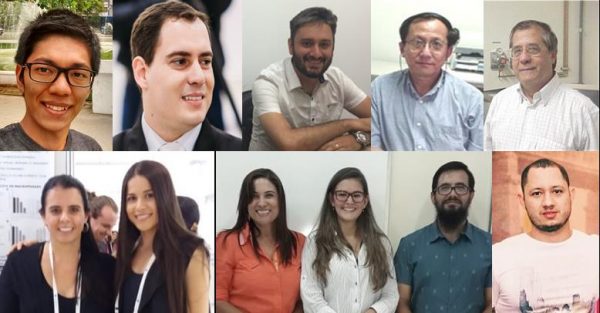
To study the anti-inflammatory action, the team performed in vitro tests (in contact with cells in laboratory containers) and also in vivo tests (using rats with paw edema, within the norms of the Brazilian code for laboratory animal use). Both types of experiments revealed that nanorods with about 4% manganese were the most effective in controlling inflammation. The in vitro tests showed these nanostructures were able to modulate molecules that regulate inflammation without causing cell death (without cytotoxicity). In the in vivo experiments, the nanorods reduced the induced rat paw edema with results similar to that of the application of dexamethasone, a well-known drug of the corticoid group.
“At first, we thought that combining these elements to form a ternary oxide could somehow potentiate these effects. But we had no idea the results would be so significant. Given that the drugs currently available in therapy are proving to be less effective every day, these results may encourage the use of these nanorods, for example in the production of a new pharmaceutical formulation, especially for cases of inflammation,” says Felipe La Porta, who is the corresponding author of the paper that was recently published by the research team in the Journal of Materials Chemistry C (impact factor 6,641).
In addition to proving the potential of the material for this application in the health area, the authors of the paper have experimentally verified the ability of nanorods to degrade a chemical dye widely found in industrial effluents, known as methylene blue. For this application, 2% manganese nanostructures were the most efficient, completely decomposing the dye in 10 minutes. “Due to the manufacture simplicity of this system, coupled with its excellent properties, this material is also promising for cleaning various environmental pollutants, and can be easily recovered at the end of this process,” adds Prof La Porta.
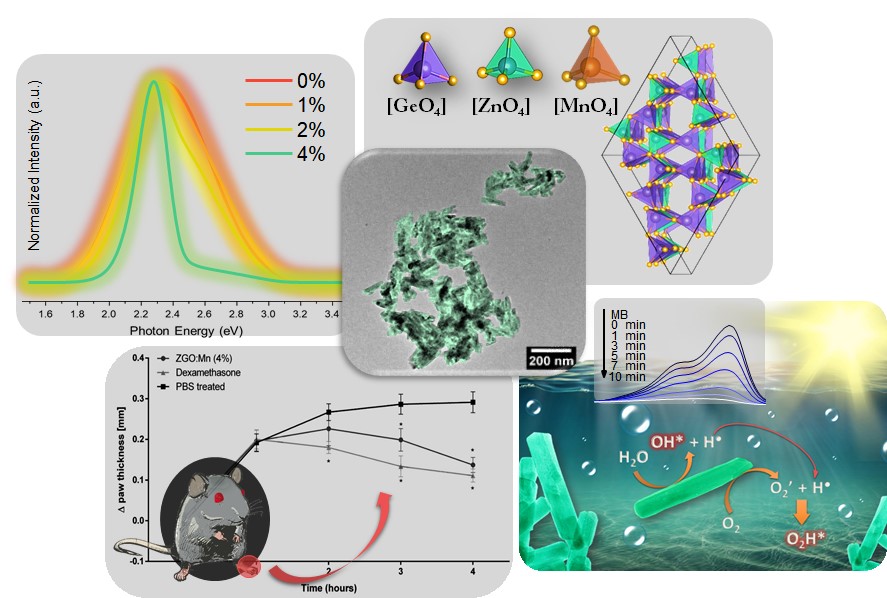
The superior properties that the Brazilian scientific team found in the nanorods with manganese can be related to the structural defects observed in these samples. In fact, the three-dimensional network of atoms that forms zinc germanate is crystalline, that is, organized in regular patterns. The introduction of manganese generates irregularities, and new properties emerge.
The scientific paper that reports this work was selected to be part of the Materials and Nano Research in Brazil collection, prepared by the Royal Society of Chemistry in celebration of the 18th B-MRS Meeting, and can therefore be accessed free of charge until October 15 of this year, here.
The work was carried out with funding from Brazilian research support agencies: the federal CNPq and Capes, and the state Araucaria Foundation, Fapesp and Fapemig.
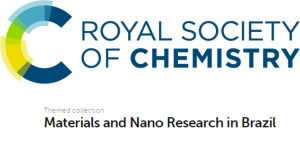 The Royal Society of Chemistry (RSC) has prepared an online collection of articles by Brazilian authors in celebration of the XVIII B-MRS Meeting (Balneário Camboriú, September 22-26, 2019). The Royal Society of Chemistry is a supporter of this edition of B-MRS’s annual event.
The Royal Society of Chemistry (RSC) has prepared an online collection of articles by Brazilian authors in celebration of the XVIII B-MRS Meeting (Balneário Camboriú, September 22-26, 2019). The Royal Society of Chemistry is a supporter of this edition of B-MRS’s annual event.
Titled Materials and Nano Research in Brazil, the collection brings together 55 articles published in RSC journals between 2017 and 2019. All selected articles are open access until October 15, 2019.
The collection is available at www.rsc.li/brazil-mrs-2019